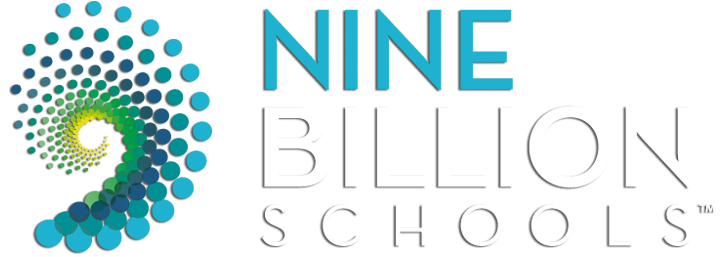9 Billion Schools: One School’s Journey – Educational Trends
By Dick Thomas
Dr. Leo Bradley, PhD, thinks standardized testing is just a bunch of hogwash.
Okay. That might be a bit of an overstatement; what he actually said in his futurecasting presentation to Mercy McAuley High School was that standardized testing isn’t the only way to accurately predict whether students will be successful in the future. In the seventh of seven break-outs during Day 1 of our futurecasting session with the new high school, Dr. Bradley’s presentation focused on four ways for the forthcoming parochial high school to reframe differentiators to attract new students.
Testing frenzy
Opportunity: Focus on soft skills like innovation, creativity, collaboration and communication opposed to standardized tests.
In recent years, education has shifted significantly to focus on standardized testing, much to the dismay of teachers and parents. This shift is the foundation of many opportunities parochial schools have to create a different educational environment—and increase student enrollment.
While students at parochial schools still take standardized state tests, the results do not have as significant an impact because private and religious schools often don’t rely on test results for funding. So parochial schools can attract students, parents and top education talent by reducing the focus on testing and shifting to other curriculum.
The benefit of more curricular freedom and control: classes that focus on developing the soft skills that will help students compete in a global economy—not just reading, ‘riting and ‘rithmetic. Why rely on tests for core competencies when we could focus on core life skills? Dr. Bradley argues that soft skills like innovation, creativity, collaboration and communication are what will help U.S. students compete on a global scale in the future. Students in other countries may score higher on standardized tests, but that doesn’t mean they’re actually receiving a better education.
Create a new structure: grades 9-14
Opportunity: Create ample opportunities for high school students to receive college credit.
One of the biggest trends Dr. Bradley noted in his presentation is that students in younger grades are being asked to master concepts that were previously reserved for high school students. Kids in grades 9 through 12 are taking advantage of this shift by enrolling in college courses by their junior or senior year of high school. This dual enrollment approach is appealing to high-achieving students because it provides another avenue for them to personalize their education. It also lessens the financial burden of pursuing a college degree; if students can earn college credit in high school, they’ll graduate from college in less than the typical four years.
Providing ample opportunities for students to pursue college credit will help attract high achieving students to parochial schools to pursue opportunities they may not have access to otherwise.
Preserve the fine arts
Opportunity: Offer a variety of fine arts extracurriculars.
Due to budget constraints and the shifted focus to standardized testing, many public schools have all but eliminated fine arts extracurriculars like art, music and theater classes. But many families still value these arts opportunities and want them to be available for their children. Maintaining robust fine arts programs creates an opportunity for parochial schools to attract art-focused students and families.
Adapt curriculum to new knowledge, needs
Opportunity: Allow curriculum to be more fluid to adapt to new information.
The pace of discovery is continuing at an incredibly fast rate, which can be a major challenge for today’s educational institutions. It is impossible to teach everything. As new information is added to curriculums nationwide, what will be eliminated? It’s frightening to imagine not teaching today’s youth some of the information obtained by their predecessors during their formal years in education, but it must be done to accommodate new material.
Of course, foundational education concepts like math, reading and writing will remain, but with some adjustments. With so much information available, some concepts will fall by the wayside. That’s why it’s important to teach students to be lifelong learners and researchers, so they continue learning outside the classroom and for the rest of their lives. Students need to be prepared to engage in self-directed learning long after they leave the classroom.
The future of parochial education
It is important for parochial schools to differentiate their approach to education to attract students from free, public schools and other private options. The changing educational landscape provides new opportunities for parochial schools to set themselves apart.
Has your school integrated any of these opportunities into its curriculum? Do you have other ideas for parochial schools to differentiate themselves as strong academic institutions? Connect with us on social media or leave a comment below to share your thoughts.
In the next One School’s Journey blog post, I’ll discuss emerging trends in educational facility design and how design impacts learning. I hope you’ll stay tuned.






